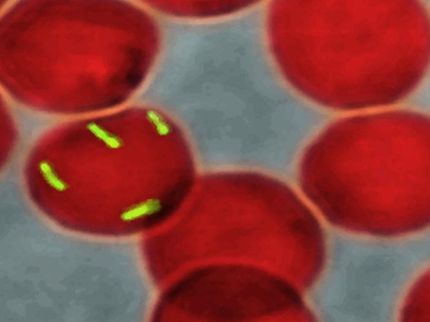New key players found in fighting fungi
Important element of immune defense against fungal infections discovered
Fungal infections are a serious health risk. They can be harmful especially to patients whose immune system is compromised through illness or chemotherapy. A team working at the Technical University of Munich (TUM) has discovered an important mechanism in the body's defenses against fungi. The discovery explains, among other things, why people with certain genetic variations are more susceptible to fungal infections.
To fight pathogens such as viruses, bacteria and fungi, the body has a complex security system. The widespread notion of white blood cells operating as the "body police", tracking down and incapacitating invaders, falls far short of adequately describing how the immune system actually works. Before the body's defense response gets started, complex chains of biochemical reactions occur at the molecular level. The scientists studying a certain immune reaction are often not yet aware of all links in these chains.
This is true, for example, in the case of the innate immune response to certain fungi studied by the team under Professor Jürgen Ruland, who holds the chair in Clinical Chemistry and Pathobiochemistry at TUM. It was known that the reaction began with protein elements known as C-type lectin receptors of blood and tissue cells recognizing certain molecules on fungus cells and triggering the chain reaction, also known as a signal pathway. It has also been known for some time that the protein CARD9 plays an important role in this chain. Only when CARD9 is present is it possible for the body to trigger an immune response that destroys the fungus cells.
A triple link in the chain
Jürgen Ruland and his team demonstrated that before CARD9 can perform its role in the chain, molecules known as Vav proteins must be active. Three of these proteins occur in the human body: Vav1, Vav2 and Vav3. If all three are deactivated, the body is particularly susceptible to fungus infections even if CARD9 is present. As signal molecules, the Vav proteins play a role in various processes, including immune responses. "Previously, however, the functions of the Vav proteins were understood mainly as part of the acquired or adaptive immune system. Their functions in the innate immune response, which is the focus of our work, remain largely unexplored," explains Dr. Susanne Roth, the first author of the study. As the name suggests, the acquired immune response means that the body learns to fight off certain substances only in the course of a person's life. By contrast, the substances resisted by the innate immune response are genetically determined before birth.
The researchers were also able to use patient data to demonstrate the importance of Vav proteins for innate immunity: A certain genetic variation was disproportionately represented among a group of people suffering from candidiasis, a yeast infection. The variation causes the protein Vav3 to occur in a slightly modified form. It was the absence of Vav3 that had the strongest impact on the immune response in past experiments.
New possibilities for prognosis and treatment
The newly discovered role of the Vav proteins could be used in the future to design diagnostic approaches. "It would be conceivable to develop a risk profile for chemotherapy patients," says Jürgen Ruland. He suggests that genetic analysis could be used to determine which patients might be more susceptible to fungal infections.
The immune mechanism discovered by the scientists could also help in the targeted treatment of illnesses. "We can now develop strategies to directly influence the signal pathway," explains Ruland. "If we are able to switch it on by artificial means, this could be used for vaccinations, for example. We also assume that the immune response to fungal infections is not the only place where the Vav protein dependent innate immune mechanisms we have discovered play a role." The C-type lectin receptors that recognise fungus molecules also identify molecules on certain bacteria, viruses and parasites. It is therefore likely that immune responses are triggered in the same way in both cases.
Original publication
S. Roth, H. Bergmann, M. Jaeger, A. Yeroslaviz, K. Neumann, P.-A. Koenig, C. Prazeres da Costa, L. Vanes, V. Kumar, M. Johnson, M. Menacho-Márquez, B. Habermann, V. L. Tybulewicz, M. Netea, X.R. Bustelo, J. Ruland; "Vav Proteins Are Key Regulators of Card9 Signaling for Innate Antifungal Immunity"; Cell Reports; 2016



















































